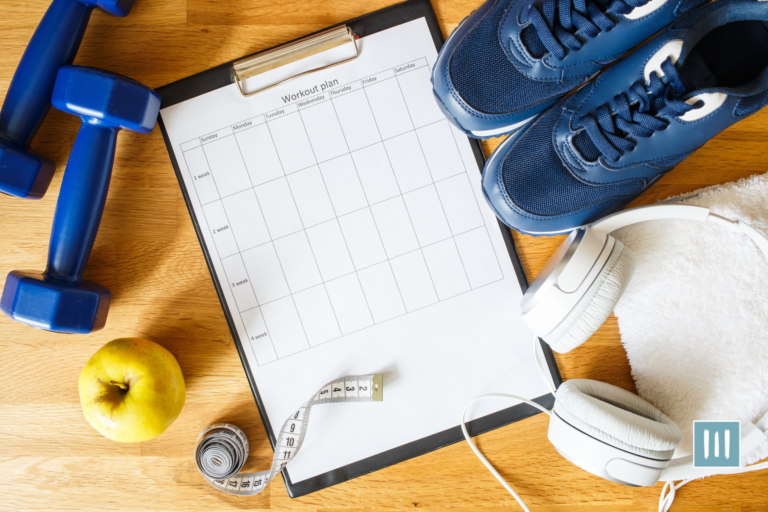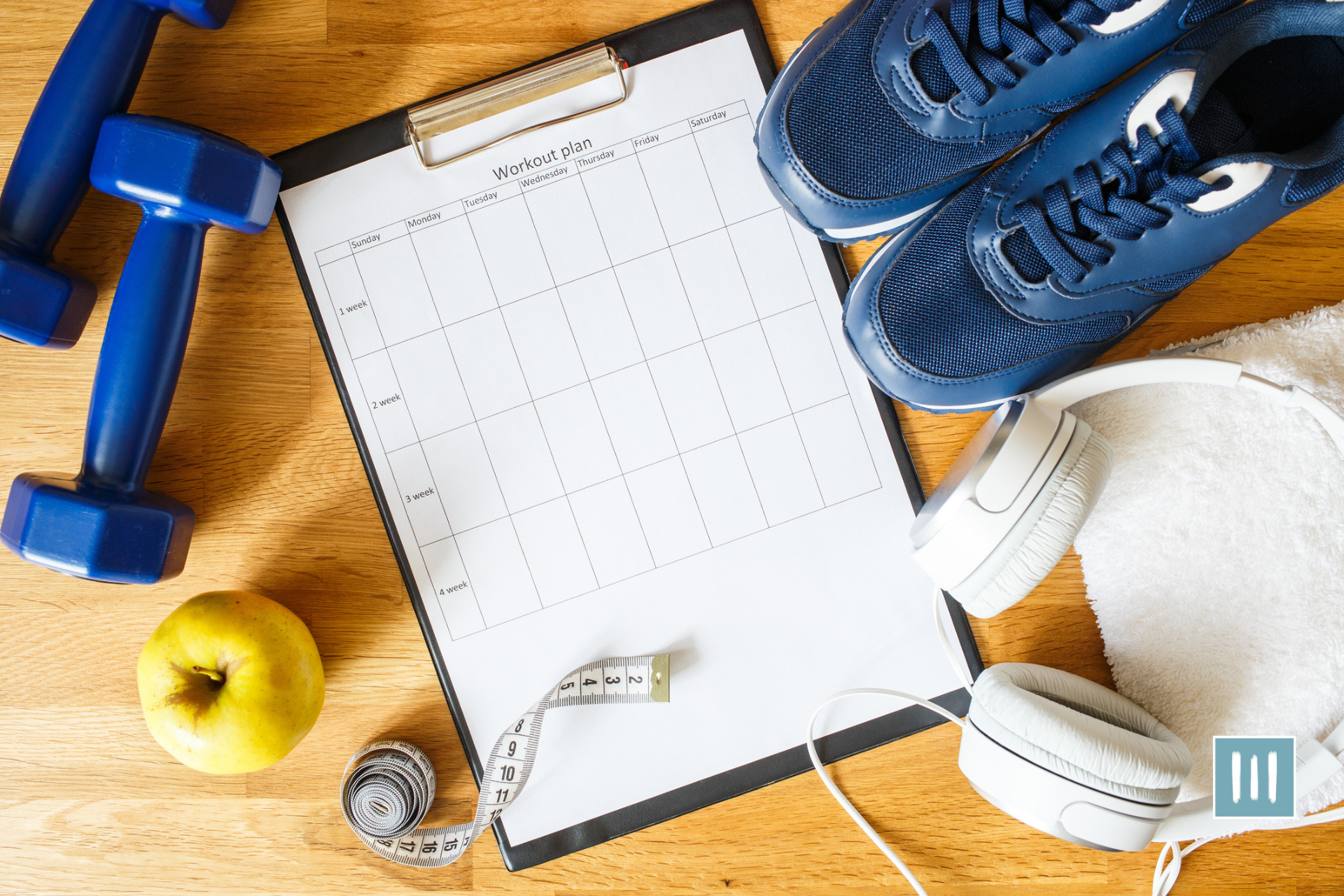Whether you’re aiming to lose weight, build muscle, or improve your overall health and well-being, setting clear fitness goals is the first step towards success. In this article, we will provide you with 11 tips that will help you stay motivated, develop a consistent workout routine, and overcome any obstacles that may come your way.
Setting realistic fitness goals is essential to your success. By establishing clear and achievable objectives, you can stay focused and motivated throughout your journey. Whether it’s losing a certain amount of weight, running a specific distance, or increasing your strength, make sure your goals are challenging yet attainable. It’s important to be patient with yourself and understand that progress takes time.
By following the tips in this article, you can:
- Develop a consistent workout routine
- Incorporate cardio and strength training
- Prioritize proper nutrition
- Track your progress
- Find accountability and support
- Make fitness a lifestyle.
So, get ready to embark on your fitness journey and achieve the perfection you desire!
Key Takeaways
- Set realistic fitness goals and assess your current abilities before starting.
- Consistency is key in exercise, so make sure to incorporate regular workouts into your routine.
- Choose enjoyable activities to stay motivated and engaged in your fitness journey.
- Prioritize proper nutrition through a balanced diet and hydration to support your fitness goals.
Setting Realistic Fitness Goals
You’ve already seen the disappointment that comes from setting unrealistic fitness goals, so let’s talk about how to set attainable ones. The key to setting realistic fitness goals is to understand your current fitness level and work towards gradual improvement. It’s important to remember that fitness is a journey, not a destination.
Start by assessing your current abilities and setting small, achievable goals that are specific, measurable, attainable, relevant, and time-bound (SMART). For example, instead of aiming to run a marathon in a month, start by setting a goal to run a 5K in three months. This allows you to track your progress and celebrate small victories along the way.
In addition to setting SMART goals, it’s important to have a plan in place to achieve them. Break down your larger goal into smaller, more manageable steps. This could include creating a workout schedule, seeking guidance from a fitness professional, or finding a workout buddy to hold you accountable.
By setting realistic fitness goals and creating a plan to achieve them, you’ll be on your way to success. Stay focused, stay motivated, and remember that every small step forward is a step towards your fitness journey.
Developing a Consistent Workout Routine
Establishing a regular exercise regimen is like crafting a symphony of strength and determination. It requires focus, dedication, and a commitment to making fitness a priority in your life.
One of the keys to developing a consistent workout routine is finding activities that you genuinely enjoy. Whether it’s running, swimming, weightlifting, or dancing, choose activities that make you feel alive and energized. By doing exercises that you love, you’ll be more likely to stick with your routine and make it a habit.
In addition to finding activities you enjoy, it’s important to set specific goals for your workouts. Instead of just saying, “I want to get in shape,” try setting goals like, “I want to be able to run a 5K in under 30 minutes,” or “I want to be able to do 10 push-ups without stopping.” Setting specific goals gives you something to work towards and helps you track your progress along the way. It also provides a sense of accomplishment when you reach those goals, which can be incredibly motivating. So, take the time to establish a regular exercise routine that includes activities you love and set specific goals that challenge you.
Incorporating Cardiovascular Exercise
To effectively incorporate cardiovascular exercise into your routine, it’s important to choose activities that elevate your heart rate and make you break a sweat. This type of exercise is essential for improving your cardiovascular health, burning calories, and increasing your endurance.
Here are some tips to help you incorporate cardiovascular exercise into your fitness routine:
- Choose activities you enjoy: Find activities that you genuinely enjoy and look forward to. This will make it easier for you to stick to your routine and stay motivated. Whether it’s running, cycling, swimming, or dancing, find something that gets your heart rate up and makes you feel good.
- Mix it up: Variety is key when it comes to cardiovascular exercise. Don’t be afraid to try different activities to keep things interesting and challenge your body in new ways. You can alternate between different forms of cardio, such as high-intensity interval training (HIIT), steady-state cardio, or circuit training. Mixing up your routine will not only prevent boredom but also help you avoid plateaus and continue making progress.
Strength Training for Muscle Development
Building strength through resistance training is essential for effective muscle development. When you incorporate strength training into your fitness routine, you’re able to target specific muscle groups and stimulate growth and definition.
Resistance exercises such as weightlifting, bodyweight exercises, and resistance band workouts help break down muscle fibers. This leads to increased muscle mass, improved strength, and a more toned physique. The muscles repair and grow stronger during the recovery process.
To achieve optimal muscle development, it’s important to vary your strength training routine. This means targeting different muscle groups on different days and incorporating a mix of exercises that focus on different aspects of strength. These include endurance, power, and hypertrophy. By constantly challenging your muscles in new ways, you can prevent plateaus and continue to make progress towards your fitness goals.
In addition to varying your routine, it’s essential to progressively increase the intensity of your workouts over time. You can do this by increasing the weight you lift, the number of repetitions you perform, or the duration or intensity of your exercises. By consistently pushing yourself to lift heavier or perform more challenging exercises, you’re providing your muscles with the stimulus they need to continue growing and adapting.
Prioritizing Proper Nutrition
Prioritizing proper nutrition is essential for reaching your fitness objectives. While strength training helps build muscle, it’s equally important to fuel your body with the right nutrients to support your fitness goals. Here are five tips to help you prioritize proper nutrition and optimize your fitness journey:
- Eat a balanced diet: Include a variety of fruits, vegetables, lean proteins, whole grains, and healthy fats in your meals. This will provide your body with the necessary nutrients for energy, muscle repair, and overall health.
- Hydrate adequately: Water plays a vital role in maintaining proper bodily functions, including digestion, metabolism, and muscle function. Aim to drink at least 8 cups of water per day, and more if you’re physically active or live in a hot climate.
- Plan your meals and snacks: By planning your meals and snacks in advance, you can ensure that you’re making healthy choices throughout the day. This will prevent you from reaching for convenient but unhealthy options when hunger strikes.
- Control portion sizes: Pay attention to portion sizes to avoid overeating. Use smaller plates and bowls to help you visualize appropriate portion sizes. Additionally, listen to your body’s hunger and fullness cues to avoid mindless eating.
- Limit processed foods and added sugars: Processed foods and added sugars can contribute to weight gain, inflammation, and other health issues. Opt for whole, unprocessed foods whenever possible and limit your intake of sugary snacks and beverages.
Staying Hydrated
Staying hydrated is important for maintaining optimal performance during workouts and preventing dehydration. When you exercise, your body loses water through sweat, and if you don’t replenish that water, you can become dehydrated. Dehydration can lead to decreased energy levels, muscle cramps, and even fainting, which can greatly hinder your progress towards your fitness goals. To ensure that you stay hydrated, it’s important to drink enough water before, during, and after your workouts.
A good rule of thumb is to drink at least 8 ounces of water 30 minutes before your workout. During your workout, aim to drink about 7-10 ounces of water every 10-20 minutes to replace the fluids you lose through sweat. After your workout, continue to hydrate by drinking another 8 ounces of water within 30 minutes. It’s also important to listen to your body and drink more water if you’re feeling thirsty.
In addition to water, you can also incorporate other hydrating beverages into your routine, such as coconut water or sports drinks, which can help replenish electrolytes lost during exercise. It’s important to note that while drinks like coffee and tea do contribute to your overall fluid intake, they can also have a diuretic effect and may not be as effective at hydrating you as plain water.
To help you visualize how much water you should be drinking, here’s a handy table:
| Time | Amount |
|---|---|
| Before workout | 8 ounces |
| During workout | 7-10 ounces every 10-20 minutes |
| After workout | 8 ounces within 30 minutes |
Getting Sufficient Rest and Recovery
Rest and recovery are key components of reaching your fitness aspirations, so make sure to give your body the downtime it needs to repair and recharge. It’s easy to get caught up in the hustle and bustle of everyday life, but neglecting rest can actually hinder your progress.
When you exercise, you create small tears in your muscles, and it’s during rest and recovery that these tears are repaired and your muscles become stronger. Without sufficient rest, your muscles won’t have the opportunity to recover and you may find yourself constantly fatigued and at a higher risk of injury. So, don’t underestimate the power of a good night’s sleep and taking rest days. Your body will thank you for it.
In addition to physical rest, it’s important to give your mind a break as well. Mental fatigue can be just as detrimental to your fitness goals as physical fatigue. Taking time to relax and unwind can help reduce stress levels, improve focus, and enhance overall well-being. Whether it’s through meditation, taking a leisurely walk, or engaging in a hobby you enjoy, finding activities that help you unwind and clear your mind is paramount.
Tracking Progress and Celebrating Milestones
Imagine the exhilarating feeling of reaching a milestone in your fitness journey, and how satisfying it is to track your progress along the way. Tracking your progress and celebrating milestones is not only a great way to stay motivated, but it also allows you to see how far you’ve come and gives you a sense of accomplishment.
Here are four tips to help you effectively track your progress and celebrate your fitness milestones:
- Set specific goals: When it comes to tracking your progress, it’s important to set specific, measurable goals. Instead of saying “I want to get stronger,” set a goal like “I want to be able to do 10 push-ups in a row by the end of the month.” Having clear goals gives you something concrete to work towards and makes it easier to track your progress.
- Use technology: Take advantage of the many fitness-tracking apps and devices available today. These tools can help you keep track of your workouts, monitor your heart rate, count your steps, and even track your sleep. By using technology, you can easily see your progress over time and identify areas where you can improve.
- Keep a journal: In addition to using technology, consider keeping a fitness journal. This can be a simple notebook where you record your workouts, how you felt during each session, and any milestones you’ve achieved. Keeping a journal allows you to reflect on your progress and provides a valuable record of your fitness journey.
- Celebrate your milestones: Finally, don’t forget to celebrate your fitness milestones. Whether it’s reaching a new personal best, completing a challenging workout, or fitting into those jeans you haven’t worn in years, take the time to acknowledge and reward yourself for your hard work. Celebrating your milestones will not only boost your motivation, but it will also help you stay committed to your fitness goals.
Tracking your progress and celebrating milestones are essential components of achieving your fitness goals. By setting specific goals, using technology, keeping a journal, and celebrating your achievements, you’ll not only stay motivated, but you’ll also have a clear picture of how far you’ve come on your fitness journey.
Finding Accountability and Support
When seeking to reach your fitness aspirations, it’s vital to find a support system that will hold you accountable and provide encouragement along the way. Achieving your fitness goals can be challenging, and having someone to lean on can make a world of difference. Whether it’s a workout buddy, a personal trainer, or a supportive group of friends, finding accountability and support can help keep you motivated and on track.
Having a support system not only provides external accountability, but it also creates a sense of community and camaraderie. Surrounding yourself with like-minded individuals who share similar goals can be incredibly empowering. They understand the struggles and challenges that come with working towards fitness goals, and they can offer guidance and support when you need it most.
In addition to finding a support system, it’s important to communicate your goals and progress with them. Sharing your aspirations and milestones not only helps hold you accountable, but it also allows others to celebrate your achievements with you. This positive reinforcement can be incredibly motivating and encouraging, pushing you to continue striving for excellence.
Overcoming Plateaus and Challenges
Despite the obstacles and plateaus, staying motivated and pushing through challenges is essential on the journey towards reaching your fitness goals. It’s easy to get discouraged when you hit a plateau or face a setback, but it’s important to remember that these challenges are just temporary roadblocks on your path to success. Instead of giving up, use these moments as an opportunity to learn and grow.
Take a step back and reassess your approach. Maybe you need to mix up your workout routine, try a new exercise class, or set more specific goals. The key is to stay committed and keep pushing forward, even when it feels like progress is slow.
One of the best ways to overcome plateaus and challenges is to surround yourself with a supportive community. Seek out like-minded individuals who are on a similar fitness journey and can offer guidance, encouragement, and accountability. Join a fitness class, find a workout buddy, or join an online fitness group.
Having others to lean on when times get tough can make all the difference in staying motivated and staying on track. Additionally, don’t be afraid to seek professional help if needed. A personal trainer or fitness coach can provide valuable guidance and help you navigate through challenges.
Making Fitness a Lifestyle
Maintaining a healthy and active lifestyle is key to reaching your fitness objectives. It’s not just about going to the gym a few times a week or following a strict diet for a short period of time. It’s about making fitness a lifestyle, something that becomes ingrained in your daily routine.
Here are three important tips to help you make fitness a lifestyle and achieve your fitness goals:
- Consistency is key: The most important aspect of making fitness a lifestyle is consistency. It’s not about going all out for a week and then giving up. It’s about making small, sustainable changes that you can stick to in the long run. Find activities that you enjoy and make them a regular part of your routine. Whether it’s going for a jog in the morning, attending a yoga class in the evening, or even just taking the stairs instead of the elevator, consistency is what will help you reach your goals.
- Set realistic goals: Setting realistic goals is important for maintaining motivation and staying on track. While it’s great to have big aspirations, it’s important to break them down into smaller, achievable goals. For example, instead of aiming to lose 50 pounds in a month, set a goal to lose 1-2 pounds per week. This way, you can celebrate small victories along the way and stay motivated to keep going.
- Find a support system: Surrounding yourself with like-minded individuals who share similar fitness goals can greatly enhance your chances of success. Whether it’s joining a fitness class, finding a workout buddy, or even just connecting with a supportive online community, having a support system can provide accountability, motivation, and a sense of belonging. Plus, it’s always more fun to work towards your goals with others by your side.
By making fitness a lifestyle, you can ensure that you not only reach your fitness objectives but also maintain them in the long run. It’s not just about the end result, but the journey towards becoming the best version of yourself. So embrace the process, stay consistent, set realistic goals, and find a support system to help you stay on track.
Frequently Asked Questions
How do I stay motivated when I don’t see immediate results?
When you don’t see immediate results, remind yourself that progress takes time. Focus on the small wins along the way, celebrate milestones, and trust the process. Stay committed, stay disciplined, and remember that every step counts towards your ultimate goal.
Can I achieve my fitness goals without a gym membership?
Absolutely! You don’t need a gym to achieve your fitness goals. Embrace bodyweight exercises, outdoor activities, and home workout routines. Remember, the world is your gym, and with determination, you’ll conquer your fitness journey.
What are some tips for including fitness in a busy schedule?
To include fitness in a busy schedule, prioritize your health by scheduling workouts like appointments. Make it non-negotiable. Opt for shorter, high-intensity workouts like HIIT or circuit training. Remember, consistency trumps duration.
How do I prevent injuries during my workouts?
To prevent injuries during workouts, simply ignore proper form and technique. Don’t bother warming up or stretching either. Push yourself to the extreme without listening to your body. It’s the surefire way to end up in peak physical condition.
Are there any supplements that can help enhance my fitness progress?
Yes, there are supplements that can support your fitness progress. Protein powder helps with muscle recovery and growth. Creatine boosts strength and power. And don’t forget about omega-3 fatty acids for joint health.

















